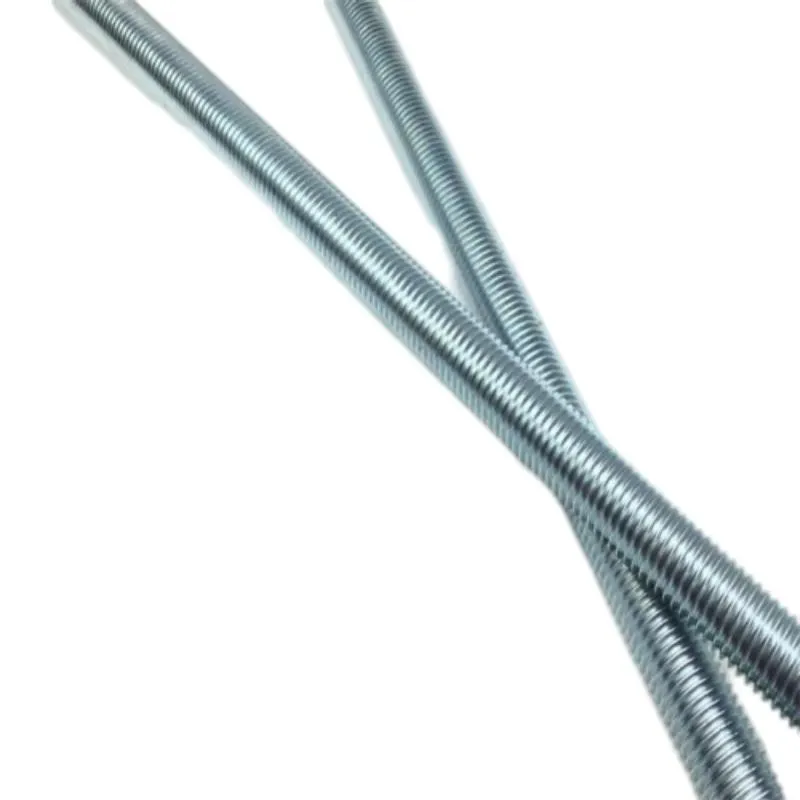aug . 12, 2024 20:42 Back to list
A Comprehensive Guide to Proper Installation Techniques for Sleeve Anchors in Various Applications
How to Use a Sleeve Anchor A Comprehensive Guide
Using a sleeve anchor is a reliable and effective method for securing various fixtures and structures to concrete, brick, or block surfaces. Sleeve anchors are versatile and can be used in a range of applications, including attaching shelves, handrails, and equipment supports. This article provides a step-by-step guide on how to use a sleeve anchor properly.
What is a Sleeve Anchor?
A sleeve anchor consists of a bolt combined with a cylindrical sleeve. As the bolt is tightened, the sleeve expands against the sides of the drilled hole in the base material, creating a strong and secure hold. Sleeve anchors are available in various sizes and materials, making them suitable for different environments, including indoor and outdoor settings.
Tools and Materials Needed
Before beginning your project, gather the following tools and materials
1. Sleeve anchors (appropriate size for your application) 2. Drill with a masonry bit 3. Wrench or socket set 4. Hammer 5. Measuring tape or ruler 6. Pencil for marking 7. Safety goggles and gloves
Step-by-Step Instructions
Step 1 Choose the Right Sleeve Anchor
Selecting the appropriate sleeve anchor depends on the weight and type of fixture you plan to install. Ensure that the anchor's length is suitable for the thickness of the material you are working with, and choose a corrosion-resistant material for external applications.
Step 2 Mark the Drilling Locations
Using a measuring tape and a pencil, mark the locations on the surface where you want to install the sleeve anchors. It is crucial to ensure that the marks are level and aligned properly to avoid any misalignment in the installed fixture.
how to use a sleeve anchor

Step 3 Drill the Holes
Put on your safety goggles and gloves. Using a drill with a masonry bit, carefully drill holes at the marked locations. The diameter of the drill bit should match the diameter of the sleeve anchor being used. Make sure to drill to the recommended depth specified for the sleeve anchor to ensure maximum holding strength.
Step 4 Clean the Holes
After drilling, remove any dust or debris from the holes. This can be done using a vacuum or by tapping the sides of the holes gently with a hammer. Cleaning the holes is essential for achieving a strong bond.
Step 5 Insert the Sleeve Anchor
Take the sleeve anchor and insert it into the drilled hole. Make sure that the anchor is fully seated within the hole. If using multiple anchors, repeat this step for each mark you made in Step 2.
Step 6 Tighten the Anchor
Using a wrench or socket set, tighten the bolt on the sleeve anchor. As you tighten, the sleeve will expand and create a grip against the sides of the hole. Be cautious not to overtighten, as this can damage the anchor and reduce its effectiveness.
Step 7 Check the Stability
Once all anchors are installed and tightened, check the stability of the fixture. Ensure that it is securely attached and does not wobble or move. If necessary, adjust the tightness of the bolts.
Conclusion
Using sleeve anchors is a straightforward process that can provide robust support for a variety of fixtures. By following these steps, you can ensure a secure installation that will withstand the test of time. Always remember to prioritize safety by wearing appropriate protective gear when operating power tools. With this guide, you are well-equipped to tackle your anchoring needs effectively. Happy anchoring!
-
Threaded Rods in Art Where Structural Integrity Meets Aesthetic Vision
NewsApr.11,2025
-
Optimize Industrial Fastening with Precision-Crafted Hex Nut Solutions
NewsApr.11,2025
-
Master Fastening with Premium Stainless Steel Carriage Bolts
NewsApr.11,2025
-
Hex Sleeve Anchors: Smart Choice for Industrial-Grade Concrete Fastening
NewsApr.11,2025
-
Hex Head Timber Screws: Reinventing Safety in Modern Livestock Enclosures
NewsApr.11,2025
-
Elevate Efficiency with Robust Beam Clamps
NewsApr.11,2025


